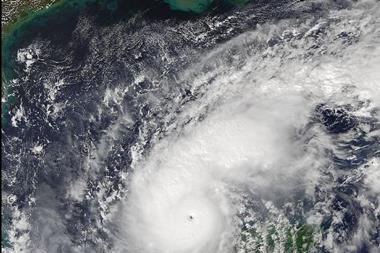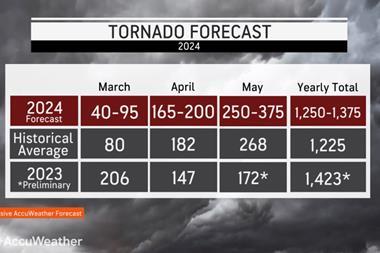Isaias was the ninth named storm of the 2020 North Atlantic hurricane season, affecting parts of the Caribbean and US east coast
Total insured losses from Hurricane Isaias will be between $3 billion and $5 billion, according to catastrophe risk modeller RMS. The estimate includes estimated losses to the US National Flood Insurance Program (NFIP), which are expected to be between $400m and $700m.
“Although Isaias weakened to a tropical storm after landfall, it maintained its intensity as it moved up the US east coast and underwent extratropical transition, due to its interaction with a strong jet stream and favorable atmospheric conditions. As a result, many areas of high exposure, especially in the Mid-Atlantic and Northeast, were subject to stronger winds and wind gusts than would otherwise be expected, especially in coastal areas of these regions. It’s another example of how impactful low intensity storms can be”, said Jeff Waters, senior product manager, RMS North Atlantic Hurricane Models.
Hurricane Isaias insured loss estimates ranges for the US and Caribbean break down as follows:
| Region | Insured Loss in USD B |
|---|---|
|
United States |
3.0 - 4.5 |
|
Caribbean |
Less than 0.5 |
|
Total |
3.0 - 5.0 |
For the US, this estimate includes wind, storm surge, and inland flood losses across parts of the Southeast, Mid-Atlantic, and Northeast regions. RMS expects the majority of total US insured losses to be driven by wind damage.
The US estimate reflects property damage and business interruption to residential, commercial, industrial, and automobile lines of business. It also includes factors for post-event loss amplification and non-modeled sources of loss, including the current COVID-19 pandemic. RMS expects the majority of insured losses to impact residential lines.
“The large number of affected exposures, especially in the Mid-Atlantic and Northeast US, are likely to produce large claims volumes. Pressure to settle these claims quickly may lead to claims inflation. We also considered the impacts of the COVID-19 pandemic. We expect fewer loss inspections following this event, potentially causing prolonged repairs and recovery times, both of which tend to inflate claims costs” said Pete Dailey, vice president, Product Management, RMS.
Hurricane Isaias was the ninth named storm of the 2020 North Atlantic hurricane season, and the second landfalling hurricane of the season. It was the Atlantic Basin’s earliest forming “I” storm on record. Isaias made landfall near Ocean Isle Beach, North Carolina on August 3, 2020 as a Category 1 hurricane on the Saffir-Simpson Hurricane Wind Scale with maximum sustained winds of 85 mph (140 km/h) according to the National Hurricane Center and RMS HWind.
The storm subsequently weakened to tropical storm intensity and quickly tracked northeast along the east coast of the US, affecting much of the Mid-Atlantic and Northeast US with tropical storm-force winds and stronger gusts.
Prior to impacting the US, Isaias made landfall over Andros Island in the Bahamas on Saturday, August 1, also as a Category 1 hurricane. Other Caribbean countries and territories impacted by the storm include Puerto Rico, the Dominican Republic, and the Turks and Caicos.




















No comments yet